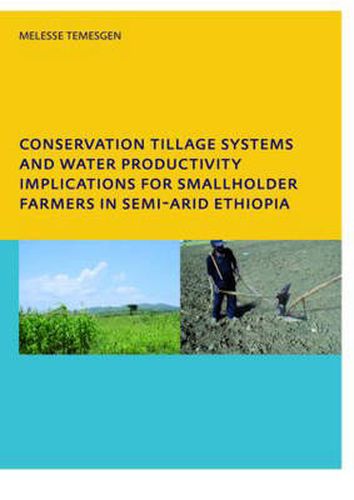Readings Newsletter
Become a Readings Member to make your shopping experience even easier.
Sign in or sign up for free!
You’re not far away from qualifying for FREE standard shipping within Australia
You’ve qualified for FREE standard shipping within Australia
The cart is loading…






Conservation tillage systems have been adopted by farmers in many countries to solve the problem of land degradation and declining water productivity. Direct application of such tillage systems has not been possible among resource-poor, smallholder farmers in semi-arid areas of Ethiopia. Problems such as the lack of rainfall, the costs of herbicides and implements, and the special cultivation needs of the crop tef, which can not be planted in rows, have developed locally-adapted conservation tillage systems. This book considers traditional tillage systems and the results of tests carried out on appropriate conservation tillage implements and systems for smallholder farmers in semi-arid regions of Ethiopia. The traditional tillage implement, the Maresha Plough, and the related tillage systems were identified as being the main cause of repeated and cross-ploughing, leading to land degradation and reduced water productivity. Modified implements were found to be suitable for conservation tillage systems while being simple, light and affordable. Two types of tillage systems developed for maize and tef were found to reduce surface runoff, increase availability of water to crops and increase yields.
$9.00 standard shipping within Australia
FREE standard shipping within Australia for orders over $100.00
Express & International shipping calculated at checkout
Conservation tillage systems have been adopted by farmers in many countries to solve the problem of land degradation and declining water productivity. Direct application of such tillage systems has not been possible among resource-poor, smallholder farmers in semi-arid areas of Ethiopia. Problems such as the lack of rainfall, the costs of herbicides and implements, and the special cultivation needs of the crop tef, which can not be planted in rows, have developed locally-adapted conservation tillage systems. This book considers traditional tillage systems and the results of tests carried out on appropriate conservation tillage implements and systems for smallholder farmers in semi-arid regions of Ethiopia. The traditional tillage implement, the Maresha Plough, and the related tillage systems were identified as being the main cause of repeated and cross-ploughing, leading to land degradation and reduced water productivity. Modified implements were found to be suitable for conservation tillage systems while being simple, light and affordable. Two types of tillage systems developed for maize and tef were found to reduce surface runoff, increase availability of water to crops and increase yields.